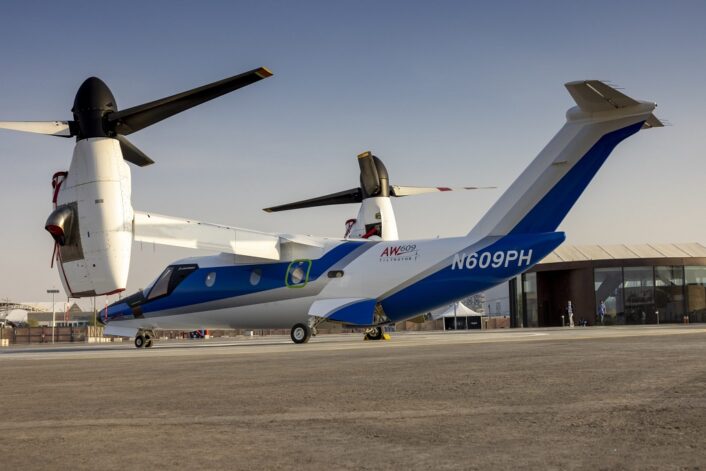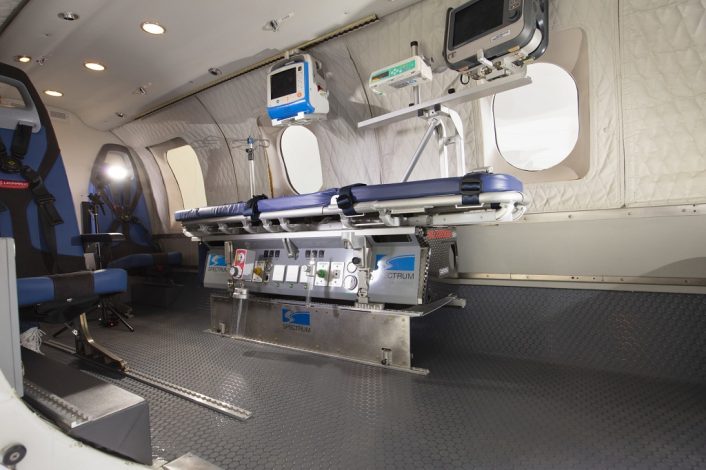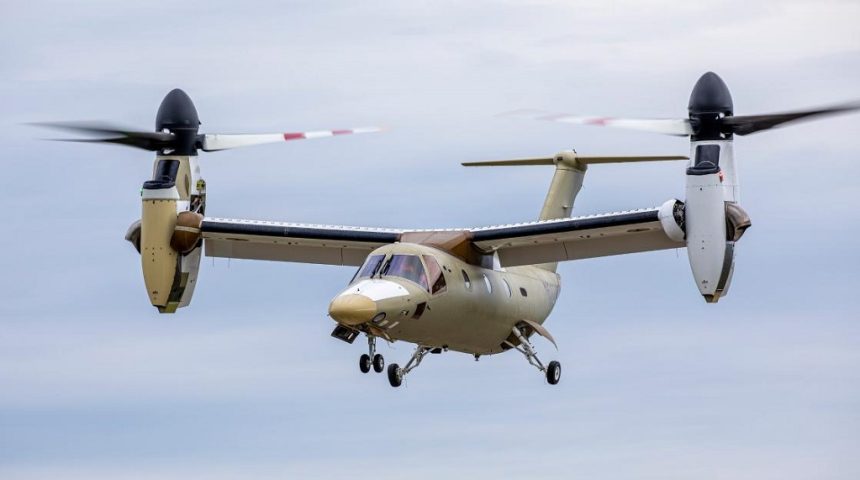This maiden flight brings the world’s first commercial tiltrotor closer to certification and delivery to the first customers.
The Leonardo AW609 tiltrotor recently reached a new milestone, with the maiden flight of the first production aircraft from the company’s facilities in Philadelphia on October 13, 2022. The aircraft, designated AC5, performed as expected during the initial in-flight evaluation of systems and general handling and will be retained by Leonardo for further testing, customer demonstrations and mission capability evaluation and expansion.
The AW609 is now a step closer to becoming the world’s first commercial tiltrotor on the civilian and public markets and is set to revolutionize the commercial aviation sector. The AW609 is currently considered, in fact, one of the most significant technological innovations in the global aviation industry and might pave the way for a large-scale diffusion of the tiltrotor platforms. It is also one of the most advanced projects of the Italian helicopter manufacturer, which cements its position in this sector.
The tiltrotor is designed to exploit the advantages of both helicopters and fixed wing aircraft. The result is given by the proprotor nacelles that can be oriented vertically to fly in helicopter configuration and automatically rotated forward, once the right speed is reached, to convert to a fixed wing mode in about 40 seconds. This conversion process transfers the lift from the rotors to the wing, without sudden changes in altitude or flight characteristics as it takes place within an optimal conversion “corridor” automatically managed by onboard computers.
The maiden flight of the first production Leonardo AW609 tiltrotor in october, 13, 2022.
Credits of Leonardo Group. pic.twitter.com/ruycOgxyND
— Ciro Nappi (@CiroNappi6) October 25, 2022
“This amazing achievement adds to several milestones for the AW609 programme over the last year, through its technical progress and during its public appearances,” said Gian Piero Cutillo, Managing Director of Leonardo Helicopters. “Together this testifies the level of maturity this groundbreaking programme has reached and our credentials to pioneer in the emerging fast rotorcraft domain. I thank our integrated team of skilled and committed people across our geographies for making all of this possible, as they continue to work towards certification.”
The AW609 AC5 will now join the other US-based prototype and the two in Italy, which are all currently involved in the last stages of testing activities ahead of the FAA (Federal Aviation Administration) certification. To date, the programme has logged nearly 1,900 flight hours in the US and Italy. As the prototype AC4 was acquired during the buyout of the project from Bell, AC5 is also the first to be manufactured under Leonardo’s sole ownership.
In fact, as we already reported, the AW609 was born as a joint Bell and Agusta project, the BA609, which flew for the first time in 2003 as the first civilian tiltrotor aircraft. Later on, Bell pulled out of the project with Agusta, which in the meantime was rebranded as Leonardo Helicopters, continued the development with the plan of introducing the AW609 on the market in the mid-2020s.

This aircraft introduces unprecedented capabilities under a dedicated “powered lift category” civil certification now under development by the FAA, which will likely be adopted also by EASA (European Union Aviation Safety Agency). This new certification is being crafted from already existing regulations, following the full certification tests performed by Leonardo with FAA witnesses and the documentation provided to the agency.
“You’re borrowing heavily from part 25 transport category fixed-wing, part 29 transport rotary-wing, and a little of part 23 [small airplanes] as well,” said AW609 marketing manager William Sunick. “Two of the most challenging phases of flight are the takeoffs and landings, so during this phase of the flight, the AW609 is essentially a helicopter — so we have borrowed heavily from that language during certification. During the flight, we’re more like a turboprop aircraft, so we’re using a lot of that information for certification. We’ve been working together with the FAA on this. It’s been tough, but we can now see the light at the end of the tunnel.”
In its best intervention strategy for tiltrotors, EASA stated that, due to the large customer base foreseen within the EASA Member States, it has begun validating Type Certificate in parallel with FAA and is compiling its own certification basis. It is expected that EASA will follow the same approach used by the FAA, as FAA’s Part 23, 25 and 29 all have they equivalent in EASA’s Certification Specification 23, 25 and 29, which essentially present the same requirements but with few differences.
In the press statement about the first flight, Leonardo said that three customers’ production aircraft are currently on the dedicated final assembly line at various stages of construction in Philadelphia. At least one of these has been confirmed to be the first AW609 for the type’s launch customer in the United States, Bristow Group, which will collaborate with Leonardo to introduce the tiltrotor into service and define mission capabilities, assessing concepts of operations, regulations, maintenance, configuration optimization and possible areas of enhancement or modifications.
The number of AW609 on order is currently a closely guarded secret. In 2015, sources said that the order book included “nearly 60 aircraft,” but no updates on that number have been provided ever since. Many operators are interested in the tiltrotor for passenger and VIP transportation, especially in the Middle East, where Leonardo has a strong presence. Significant interest for the AW609 also exists in areas such as Australia and Japan, where the tiltrotor is being eyed to be employed in the health sector.
In time-critical scenarios the tiltrotor’s performance greatly improves response times and coverage area during Search and Rescue (SAR) and Emergency Medical Services (EMS) missions. In these roles, the AW609’s wide cabin door and 600 lb hoist can easily handle a rescue basket, while two stretchers can be quickly loaded for the patients. Up to four medics can provide uninterrupted medical care for a patient in a fully medically equipped cabin.

As a matter of fact, Leonardo is debuting an air ambulance interior mockup of the AW609 at the Air Medical Transport Conference in Tampa, Florida. The AW609 features a 35-inch-wide main cabin door that easily accommodates patient transfer from ground ambulance litter to the aircraft’s medical pedestal. The cabin is large enough for one patient and four medical attendants or two patients with fewer attendants.
“The aircraft has drawn a lot of attention, especially in the EMS configuration,” said Sunick. “The ability to have a point-to-point high-speed vertical lift aircraft with a pressurized interior to transport that organ is huge,” he added while talking about the use of aircraft in rural areas and for the co-transport of transplant organs and associated medical teams.
In rural applications, the AW609 has the ability to quickly transport patients to the medical facility with the most appropriate level of care, including special needs such as burns and eye injuries, according to Sunick. Also, the cabin can be pressurized down to sea level, enabling a higher level of care to be administered to patients.









